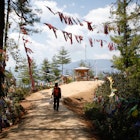
Nov 22, 2024 • 7 min read



From touring Rajasthan's tremendous forts to soaking up fantastic festivals, here are the best things to do in India. Shutterstock
There are many Indias within India. This expansive land of ancient temples and opulent palaces, forgotten cities and lost traditions, spice markets and famously spicy food is almost a world unto itself, home to a vibrant diversity of peoples and cultures. For many travelers, a visit to India is the trip of a lifetime.
The experiences you have here will linger long after you leave these shores, but with so much to see and such a vast area to explore, it can be hard to decide what to prioritize. To set you on the path to India perfection, here is our list of the best things to do in India.

The best way to experience the timelessness of Varanasi, hailed as the world’s oldest continuously inhabited city, is to start just before dawn breaks. At Assi Ghat, Hindu devotees gather for the Ganga Aarti ceremony on the banks of the Ganges, intoning sacred hymns and prayers on the steps that descend to the holy river.
Next, take to the water in a small boat, watching the sun rise as life starts to stir along the riverbanks. As day breaks, a burst of activity erupts on the riverside as saffron-clad sadhus (holy men), pilgrims, vendors and tourists gather for religious rituals, yoga practice and dips in the sacred Ganges. Most boat trips pass the main Dashashwamedh Ghat toward Manikarnika Ghat, where funeral pyres burn as the dead are cremated. Visitors can observe from a respectful distance, but avoid taking photos or intruding on the ceremonies.
Planning tip: We recommend visiting an akhara (wrestling center) to see wrestlers practice their traditional sport in a mud pit in the early morning light. End your tour with some soulful food: seek out the typical Varanasi breakfast of kachoris (deep-fried pastries) stuffed with lentils and served with spicy potato gravy. Finish the meal on a sweet note with melt-in-mouth jalebis (fried whorls of dough).
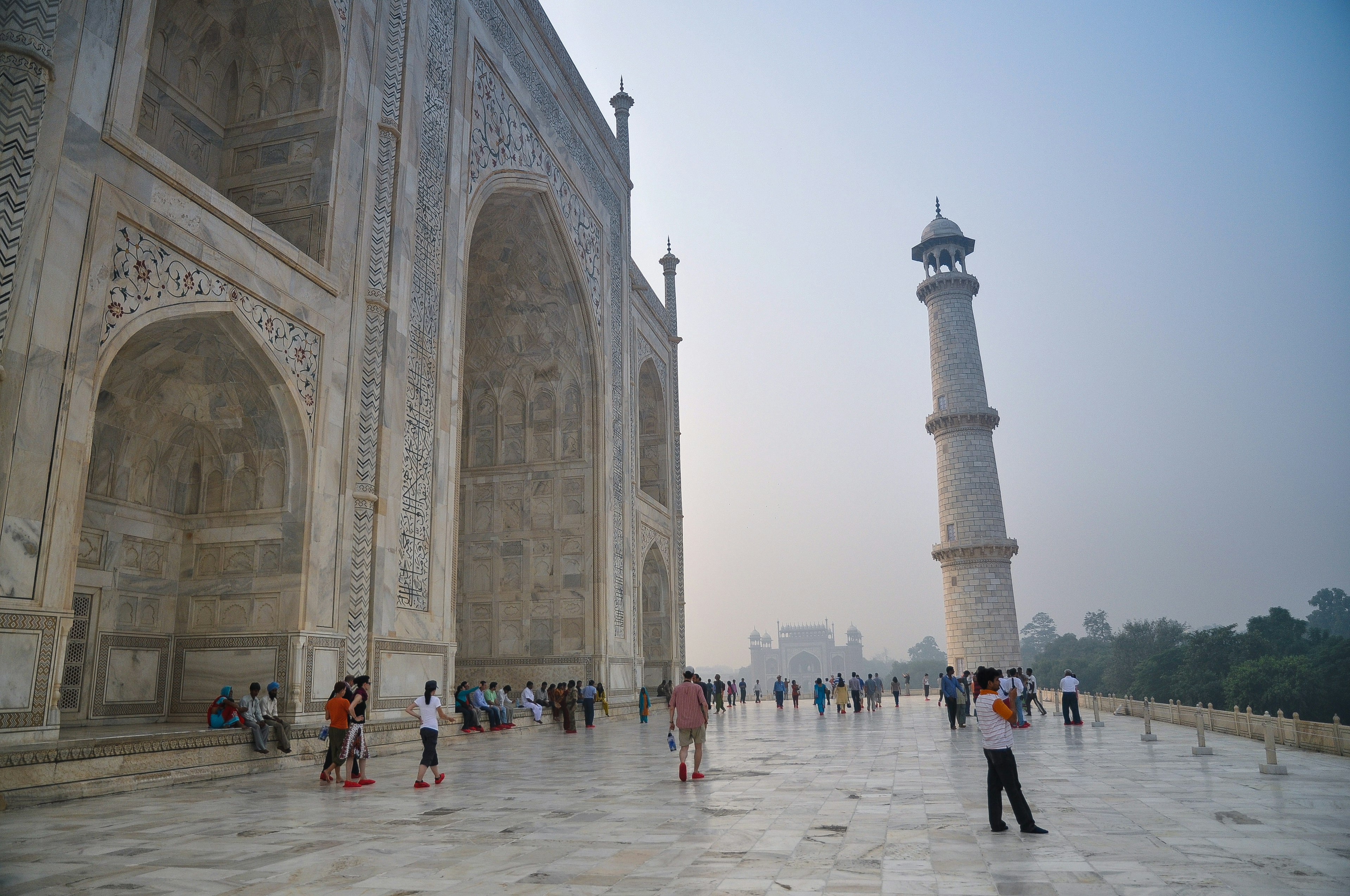
The iconic symbol pictured on every India travel brochure, the Taj Mahal in Agra really is a highlight of any trip here. Despite the tourist crowds, you can't help but gaze in wonder at this marbled mausoleum built by Mughal emperor Shah Jahan for his beloved wife, Mumtaz.
While it’s hard to get a bad shot of the Taj, the most vivid photos are usually taken at sunrise and sunset from Mehtab Bagh, the Mughal garden across the Yamuna River. Arrive just before dawn and watch the colors change on this sublime monument dedicated to eternal love. Over the course of a day, the sun paints the marble in different hues, transforming the dome from pale pink at sunrise to orange at sunset.
Before leaving Agra, pay a visit to the eye-catching tomb of Itimad-Ud-Daulah – a precursor to the Taj Mahal, constructed in the 1620s and dubbed the “Baby Taj." It was created for Mumtaz’s grandfather, Mirza Ghiyas Beg, by his daughter, Nur Jahan.
Planning tip: Special tickets for nighttime visits are sold on evenings with a full moon. They can be bought in person 24 hours in advance at the Archaeological Survey of India (ASI) offices on Mall Road; bring your passport as ID.
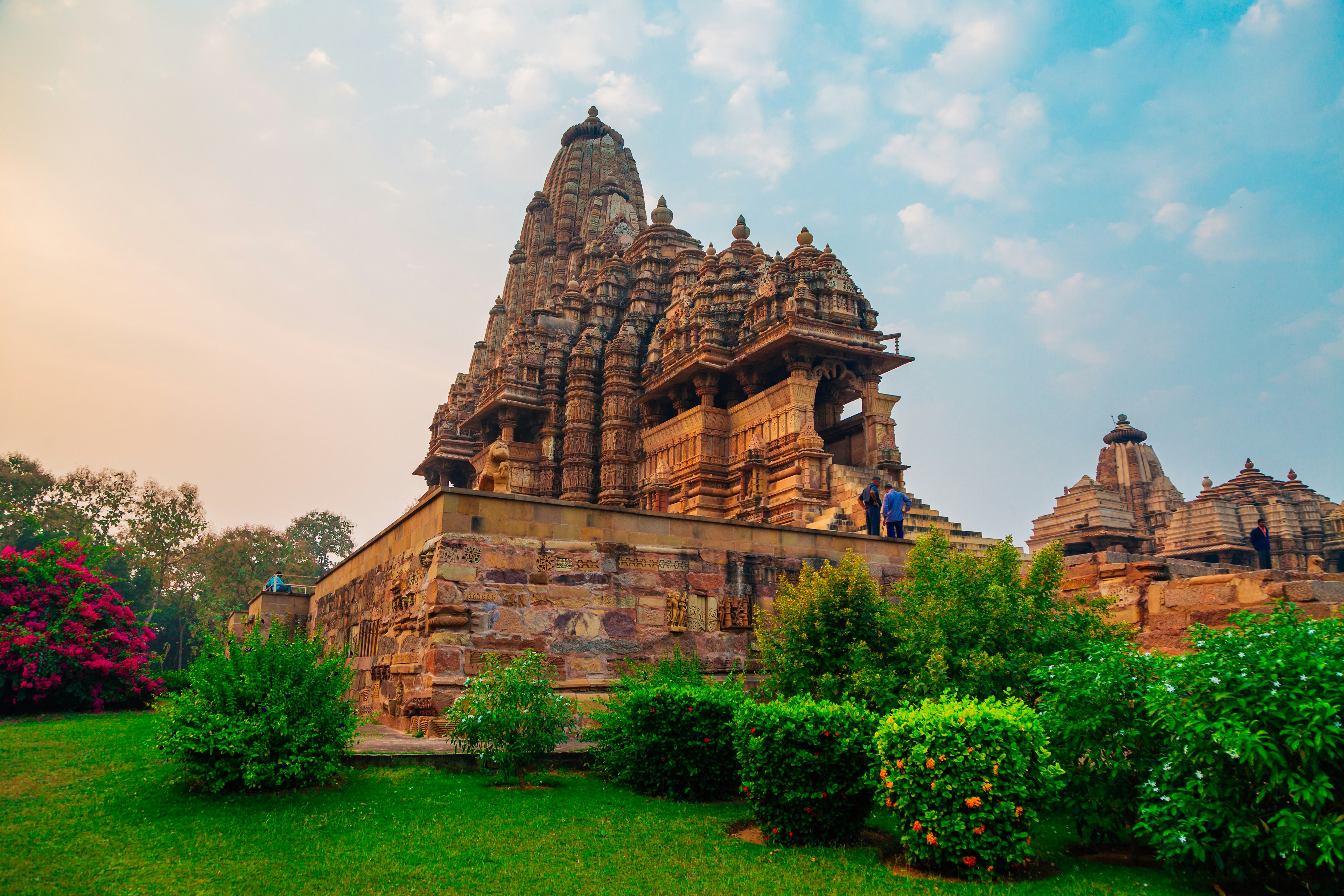
As you stand in front of erotic sculptures of figures locked in improbable positions at Khajuraho, you can almost feel the passion of the carvings. Perhaps no other heritage site in India evokes as much wonder and curiosity as these famous temples, built nearly a millennia ago. And yet – as guides will painstakingly tell you – barely a tenth of the carvings in the 22 temples that have been excavated here are dedicated to erotic poses.
As you explore the temples' three-dimensional narratives, you can decide for yourself why the Chandela clan chose to depict eroticism on the walls of their temples, which are dedicated to both Hindu and Jain deities. Don't miss one of India’s oldest surviving Tantric temples, dedicated to the Chausath Yogini – the 64 Tantric goddesses; its cells may be bereft of idols, but the architecture, even in ruins, is fascinating.
Planning tip: You will need a day to explore all of Khajuraho’s temples; start as early as possible before the light becomes too harsh for photography, or come in the afternoon when the warm sunlight creates evocative shadows. Staying overnight provides an opportunity to visit twice and capture the site's changing mood.
A wild and remote biodiversity hotspot, Sundarbans National Park marks the point where three mighty rivers – the Ganges, Brahmaputra and Meghna – join the Bay of Bengal. Spilling into neighboring Bangladesh, this maze of mangrove forests, swamps, mudflats and riverine islands can be explored on boat safaris, seeking the 100 or so Bengal tigers that roam its brackish channels.
With its serpentine web of mangrove roots, the dark and dense undergrowth also provides cover for crocodiles, snakes and other marshland predators. Observation towers give you a bird’s-eye view of the swamps; look out for different varieties of kingfishers, raptors and myriad water birds. Village walks are possible on a handful of islands and locals will tell you humbling tales of life amid devastating cyclones and treacherous wildlife in this fragile and unforgettable ecosystem.

With an entire galaxy overhead to keep you entertained before bedtime, sleeping among the rolling sand dunes and parched scrub of Rajasthan’s Thar Desert is an experience that will stay with you forever. Starting from golden-hued Jaisalmer, the closest desert camps are pitched across the windswept Sam Sand Dunes, which rise to more than 50m (164ft) in height. However, the best camel safaris roam deeper into the desert, offering serene silence and genuinely dark skies, away from the day-tripping crowds.
Planning tip: Before you head for the dunes, take an unmissable wander through the golden, temple-studded alleyways of majestic Jaisalmer Fort, which 5000 people still call home. The seven Jain temples within the fort's robust walls feature some of the finest carvings in northern India.
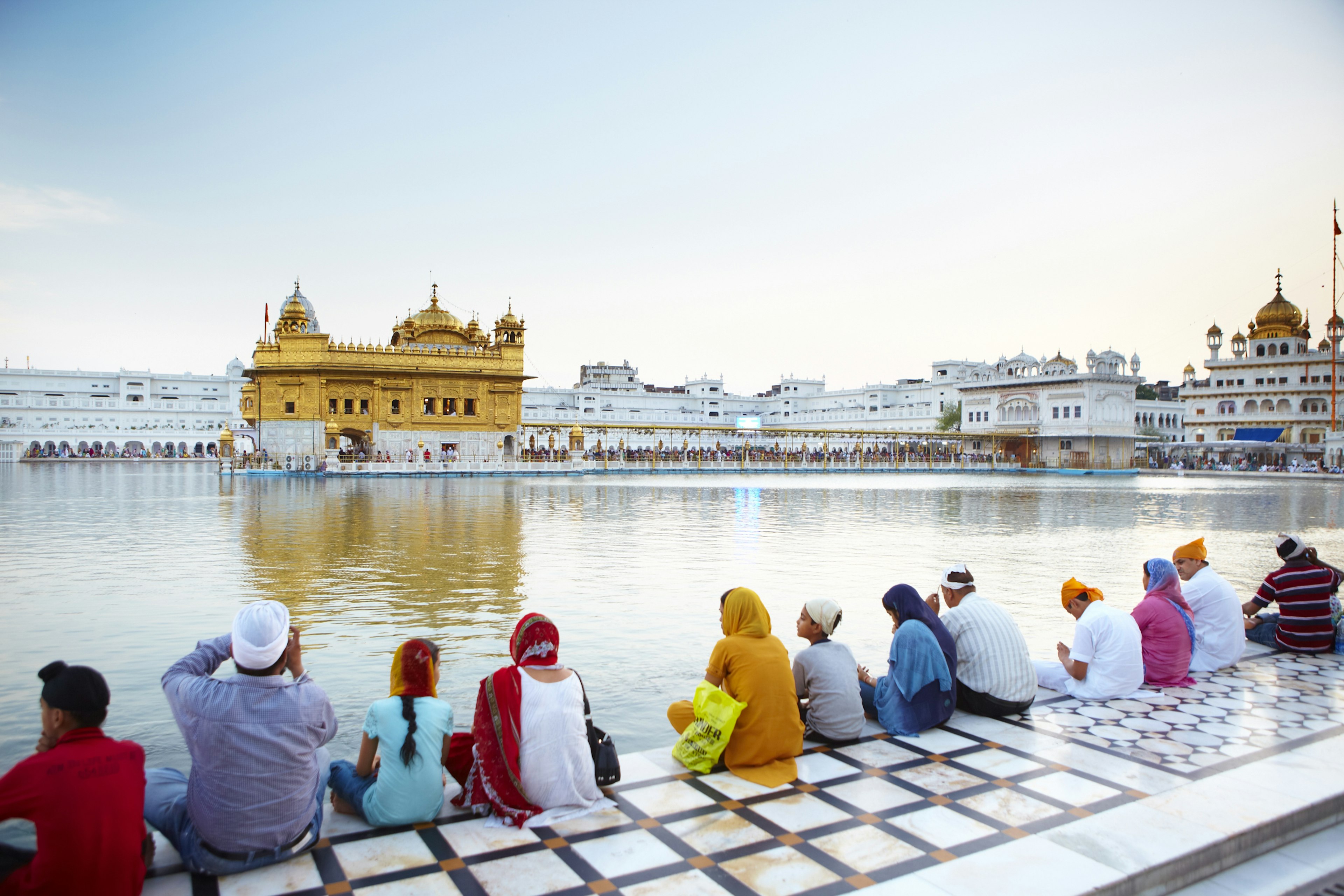
The best time to experience Amritsar’s sublime Golden Temple is at 4am (5am in winter) when the revered scripture of Sikhism, the Guru Granth Sahib, is installed inside the temple for the day, accompanied by an electrifying hum of ritual chanting. As dawn breaks, the entire temple complex is lit up by the golden central shrine, creating spectacular reflections in the surrounding pond, Amrit Sarovar (the Reservoir of Nectar).
Hospitality and charity are key values for Sikhs, and this famous gurdwara (place of worship) is open to anyone of any faith. The incredible community kitchen known as the Guru-Ka-Langar offers simple, vegetarian meals throughout the day for up to 100,000 devotees (meals are free but a donation is appropriate).
A maze of small canals, brackish lagoons and silvery rivers draining into the Arabian Sea, the backwaters of Kerala offer a completely different view of India. You can choose your own adventure as you make your way through this tangle of channels and lakes, dropping in on communities that fish and farm along the waterlogged channels.
During an overnight cruise on a kettuvallam (houseboat), you can pass the hours fishing, visiting small villages, bird watching or sitting back to watch the world go slowly by. Public ferries between villages offer a taste of the backwaters if your stay is too brief for an overnight boat trip.
Planning tip: Many cruises start in Alappuzha (Alleppey), a small town on the Ernakulam–Kayamkulam coastal railway line south of Kochi, but the quality of houseboats varies – your best bet is to head to the dock and view a selection of houseboats one or two days in advance. If you’re booking online using an aggregator such as Booking.com, be sure to read plenty of reviews before you book.

Touching the high Himalayas, the mountain valleys of Ladakh leave people breathless – both figuratively and literally. You’ll need a few days to acclimatize once you arrive in this state that was once a Buddhist kingdom, with stark and vivid landscapes rising from deep valleys to mountaintops standing more than 6000m (19,685ft) above sea level.
Dotted with snow-dressed mountains, icy glaciers, alpine meadows, tiny orchards, and arid valleys carved by meltwater rivers, plus high-altitude lakes that change color depending on the light, the region is a natural playground for hikers, bikers and adventure enthusiasts. In winter, travelers come here for expeditions to seek snow leopards and treks along the frozen Zanskar River.
Chortens (stupas) and gompas (Tibetan Buddhist monasteries) are scattered across Ladakh's chilly deserts and visiting these sacred sites will immerse you in the traditions of Tibetan Buddhism. The region’s oldest monastery is at Alchi, though Thiksey, Stok, and Hemis gompas, closer to the capital Leh, are the most popular stops for visitors.
Planning tip: Don’t miss the views of Ladakh’s wind-sculpted badlands from Lamayuru Monastery, a convenient stop when traveling west from Leh to Srinagar in Kashmir. Remember to cover your shoulders and legs while visiting and refrain from taking photos inside the monastery premises.
Located near the temple town of Puri in Odisha, the colorful Raghurajpur Arts and Crafts Village is a living gallery maintained by local chitrakaars (folk artists). The village showcases the traditional art of pata chitra painting, paying tribute to the triad of deities enshrined within Puri's Jagannath Temple. Each canvas is specially prepared with layers of cotton cloth, and tribal motifs, folk stories, myths and legends are the subjects of the artworks. Expect the artists to invite you into their homes to see the murals that cover the walls.
As well as pata chitra, you can see tussar silk paintings, toys and palm-leaf engravings. You can also sit in on live demonstrations or try your hand at creating your own piece of art. Try to see a traditional performance of the Gotipua dance; young men from the community can be seen practicing at local gurukul (dance academies).
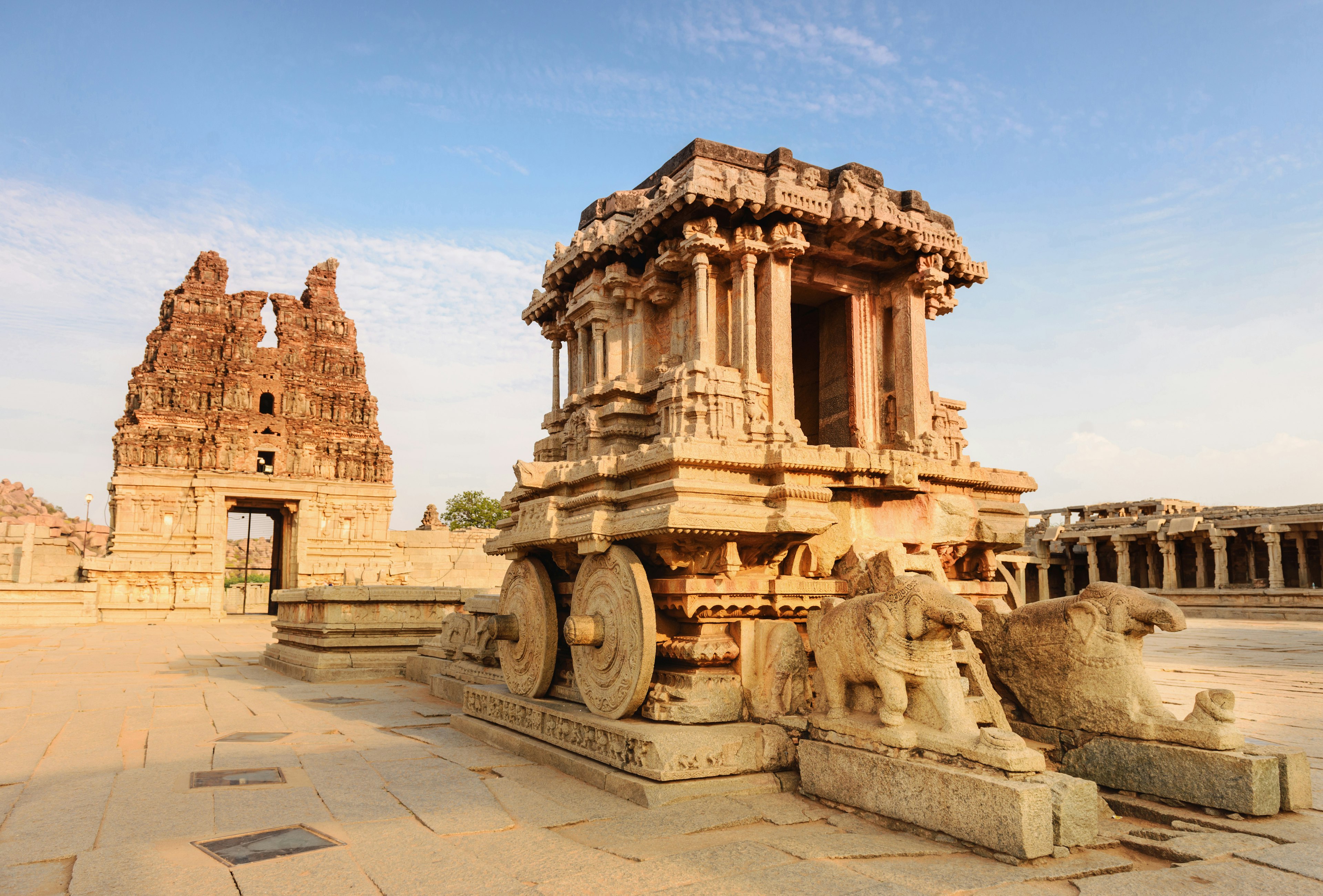
If the ruins of Hampi could speak, they would tell a glorious tale of a powerful and prosperous kingdom whose rulers built magnificent temples, palaces and monuments, traded precious stones in vast bazaars, and contributed immensely to the art, architecture, culture and literature of medieval India. Founded 600 years ago by two brothers, working under the guidance of their spiritual guru, Sri Vidyaranya, Hampi was once the capital of the Vijayanagar Empire, which ruled the Deccan Plateau of South India for centuries.
The ruins of Hampi sprawl for miles, centered on several important groups of monuments, including the Royal Enclosure – once home to the rulers of Vijayanagar. The still-active Virupaksha Temple is the nucleus of spiritual activity in Hampi Bazaar, the village at the heart of the ruins, but the most striking structure is the Vittala Temple, an architectural marvel featuring an elaborately carved stone chariot that is illustrated on India’s 50-rupee note.
Planning tip: Allow at least three days to fully explore this special place. The temples around Hampi Bazaar can easily be explored on foot; to explore surrounding areas, rent a bicycle or motorbike, or hire an auto-rickshaw. Boatmen offer transfers by coracle at various crossing points along the Tungabhadra River.
Goa is not just a destination; it’s a state of mind. The very name evokes images of sun, sand and sea, and while Goa’s beaches are the main attraction, the small state’s riverine islands, mangrove swamps, dense forests, and spice and cashew plantations are memorable and sensuous experiences in themselves.
Cruise the Zuari River and narrow canals bordered by mangroves at dawn to spot six varieties of kingfishers, along with myriad water birds, or hike through the forests inland to reach hidden temples. For more nature, visit Mollem National Park and Bhagwan Mahavir Wildlife Sanctuary, home to the mighty Dudhsagar Falls – especially impressive just after the monsoon, when the cascades are at full force.

Be sure to pack your sunglasses – the sparkling sodium chloride crystals of the White Rann will literally dazzle you. One of the world’s largest salt deserts, the Rann of Kachchh (Kutch) in Gujarat is divided into the Greater and Lesser Rann (which includes the White Rann), creating a unique ecosystem of seasonal salt marshes that are submerged during the monsoons. As the waters evaporate, the wetlands transform into an arid expanse of salt, a phenomenon seen only in winter, from October to March.
We recommend staying in Hodka or Dhordo, where resorts are composed of Kutchi (Kutch-style) bhungas – circular-walled thatched mud huts that offer a welcome respite from the harsh desert heat. While you’re in the area, head to the nearby ruins of the ancient Indus Valley civilization at Dholavira to the east, and the 18th-century Aaina Mahal Palace in Bhuj, to the southwest.
Planning tip: The landscape is especially mesmerizing at sunrise and sunset, or at night under the full moon. Between November and February, Gujarat Tourism hosts the annual Rann Ustav, a fascinating cultural festival celebrating the state's unique culture. Expect a flood of food and local handicraft stalls as well as Sufi devotional songs and performances by indigenous Kutchi folk musicians in traditional embroidered tribal costumes.
Located in Tamil Nadu, the 1200-year-old Great Living Chola Temples leave visitors both spellbound and humbled. These mighty monuments include the Brihadeeshwara Temple in the southern city of Thanjavur, built by King Raja Raja Chola I in the 10th century. Its soaring 63.4m-high (208ft) central tower is one of the largest spires of any Hindu temple anywhere – hence its nickname, the Big Temple.
Raja Raja Chola I’s son, Rajendra Chola, ambitiously set out to create an even bigger version of his father’s temple at Gangaikonda Cholapuram, but for mysterious reasons the complex was never completed. A century later, in a small town called Darasuram, a third temple was erected by Raja Raja Chola II; if the first two Brihadeshwara temples are larger-than-life marvels, the Airavateswarar Temple displays mastery on a smaller scale – a tribute to the craftsmanship of the era.
Planning tip: You’ll need a day to explore all three temples, which are still in active use. It's best to visit either early in the morning or in the evenings. Each of the temples is dedicated primarily to Shiva – look out for statues of Nandi, Shiva's faithful bull vahana (mount).
A colorful mosaic of arts, crafts, architecture, food and traditions, Chettinadu spans 75 villages in Tamil Nadu that were once home to an affluent mercantile community called the Nagarathar Chettiars. This merchant clan grew rich trading in jewelry and spices, leaving behind lavish homes as a reminder of their cosmopolitan culture and the wealth they accumulated.
Known locally as nattukottai (country forts), each residence is a larger-than-life personal palace. Some properties cover more than 3700 sq meters (39,826 sq ft), with colorful facades featuring arches, pillars, sculptures and friezes. But it’s the interiors that truly amaze, with Belgian mirrors and chandeliers, Italian marble, Japanese artworks, Spanish tiles, Burmese teak and other luxurious components sourced from around the world.
Villages such as Karaikudi, Kanadukathan, Devakottai, Kothamangalam, Pallathur and Kottaiyur feature grand houses that are up to 200 years old. While most have been abandoned, a few have been converted into luxury hotels, and some can be entered for a small fee.

On thrilling 4WD safaris through the dense forests of India's wonderful wildlife sanctuaries, you stand a good chance of spotting India’s Big Five animals – tigers, elephants, leopards, sloth bears and gaur (Indian bison). There are more than 100 national parks and tiger reserves spread across the country, including venerable Corbett Tiger Reserve; Kanha, Bandhavgarh and Panna in Madhya Pradesh; Pench and Tadoba-Andhari in Maharashtra; Ranthambore in Rajasthan; Nagarhole and Bandipur in Karnataka; Mudumalai in Tamil Nadu, and many, many more.
Farther afield, Kaziranga National Park in Assam is home to the critically endangered one-horned rhinoceros, while elusive snow leopards move furtively through Hemis National Park in Ladakh and Asiatic lions congregate in Gujarat’s Gir National Park. If birds are more your speed, head to the teeming marshlands of Keoladeo National Park in Rajasthan, which shelter everything from eagles to cranes and spoonbills.
Planning tip: Early-morning safaris tend to be the most rewarding, although evening safaris bring a magical light. Late summer is the best time for spotting wildlife, but many national parks are closed during the early summer monsoon. Many parks offer elephant safaris, but these are not recommended as carrying passengers can be harmful to elephants.
The verdant hill station of Darjeeling in West Bengal is an idyllic escape, towered over by snow-capped Himalayan peaks, nestled amongst rolling hills of rhododendron and pines, and overflowing with tea plantations. Although Indian-style chai is readily available, this is “orthodox” tea country – referring to loose-leaf tea that’s brewed in a teapot with hot water, unlike chai, which is made from leaves prepared through the CTC (crush, tear, curl) process. With plenty of hole-in-the-wall cafes and restaurants, and peaceful hiking trails and Buddhist monasteries to explore, Darjeeling offers a welcome change of pace from the busy plains.
Similarly, Kangra – another important Indian tea-growing region in Himachal Pradesh – offers relaxed views of Himalayan foothills, and it can be easily reached from the hill station of Dharamshala and the adjacent settlement of McLeod Ganj. Currently, Dharamshala is home to the Dalai Lama and the exiled Tibetan government, and the town is rich with Tibetan influence.
Planning tip: The famous narrow-gauge Toy Train to Darjeeling runs uphill from New Jalpaiguri (NJP) station, following the Darjeeling Himalayan Railway, a UNESCO World Heritage-listed institution. The main NJP–Darjeeling service is pulled by diesel engines, so many visitors opt for steam train "joy rides" from Darjeeling to Ghum, India's highest railway station. October to January are peak months for the Toy Train, so book your seats in advance via the IRCTC website.
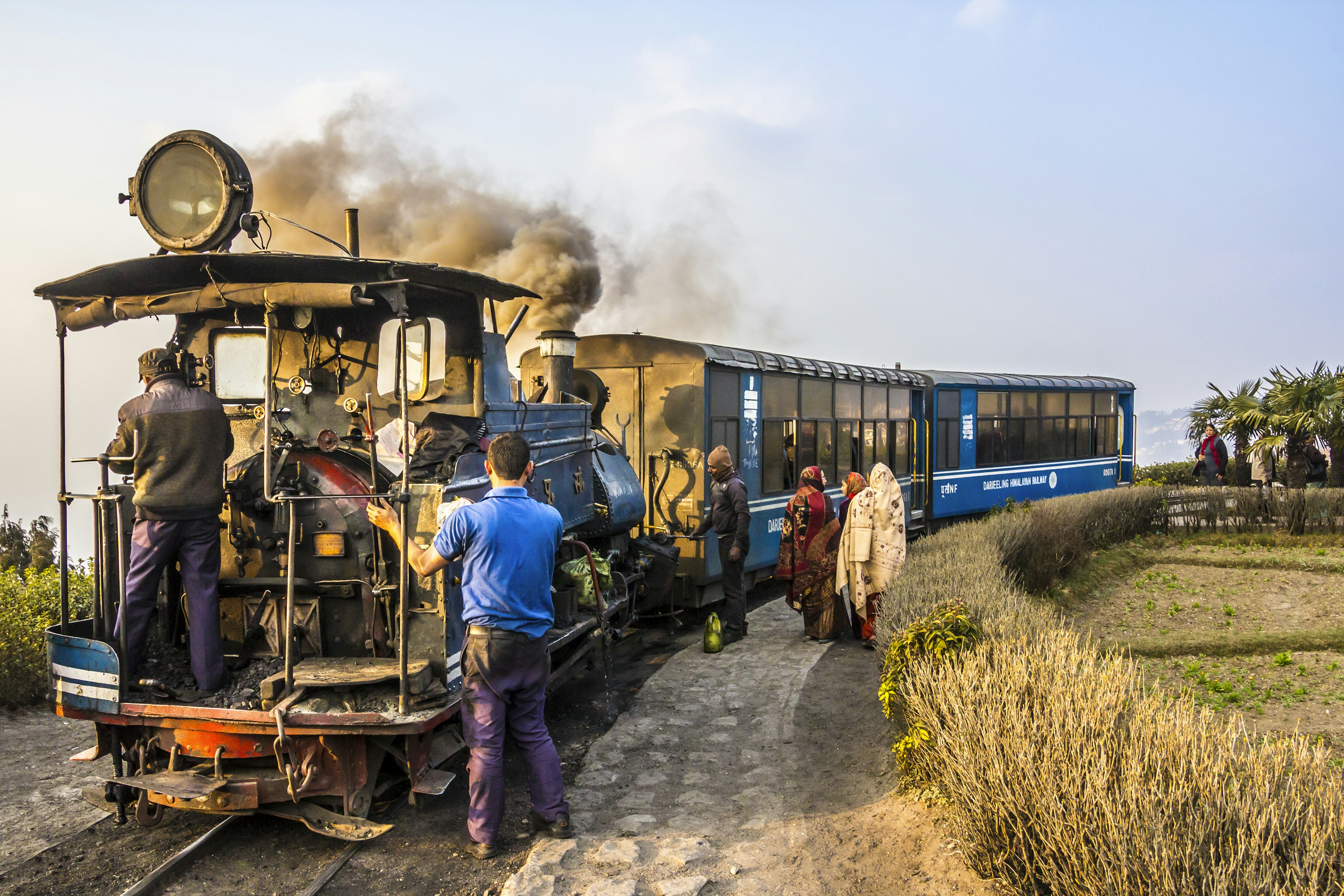
Strikingly scenic and soul-soothing, rail travel in India offers a pleasant change of pace from the vibrant cacophony of urban tourist hubs, and the famous toy trains of the Himalayan foothills are just the start. Try heading from Delhi to Rishikesh via the overnight Shatabdi express – carefully poke your head out of the window to watch the entire length of the train weaving through the countryside. As the views roll by, expect to be generously supplied with railway snacks – from samosas and poha (flattened rice) to full meals – and sweet milky chai, as chaiwalas saunter by with a kettle and paper cups.
If you’re looking to explore southwestern parts of the country, several dramatic train routes connect the busy city of Mumbai with the historic port city of Kochi, whooshing past swathes of lush green countryside in the Konkan region, and offering glimpses of the sparkling Arabian Sea.
Planning tip: Seats on popular routes fill up fast, so it’s worth booking your ticket online in advance via the IRCTC website. For maximum privacy and comfort for long overnight journeys, book an AC-class ticket (you can choose from four-bed, three-bed or two-bed cabins). If you’re keen to meet local people, opt for a Sleeper class ticket, but don’t expect to get too much sleep with the coming and going of fellow passengers. Although you’ll find sit-down toilets on board, it’s advisable to carry your own toilet paper.
Tucked away in the Himalayan foothills upon the banks of the Ganges, Rishikesh is a renowned spiritual hub, famed for its ashrams and yoga and meditation centers. Beyond the oft-discussed “Beatles Ashram” – a now-abandoned spiritual center visited by the Beatles in the 1960s – Rishikesh is also the setting for the annual International Yoga Festival in March.
All sorts of yoga courses are available, taught by both Indian and foreign teachers. For beginners, we recommend signing up for a course at the Sivananda Ashram, where you can learn surya namaskars (sun salutations) and basic asanas on the river bank. There are also women-only yoga courses available.
Planning tip: If you’re planning to visit during the International Yoga Festival, reserve ahead online. Most yoga centers are located between Ram Jhula and Laxman Jhula, so book your accommodation several months in advance. Note that Rishikesh is a vegetarian city; for non-veg dishes, head to the nearby town of Haridwar.
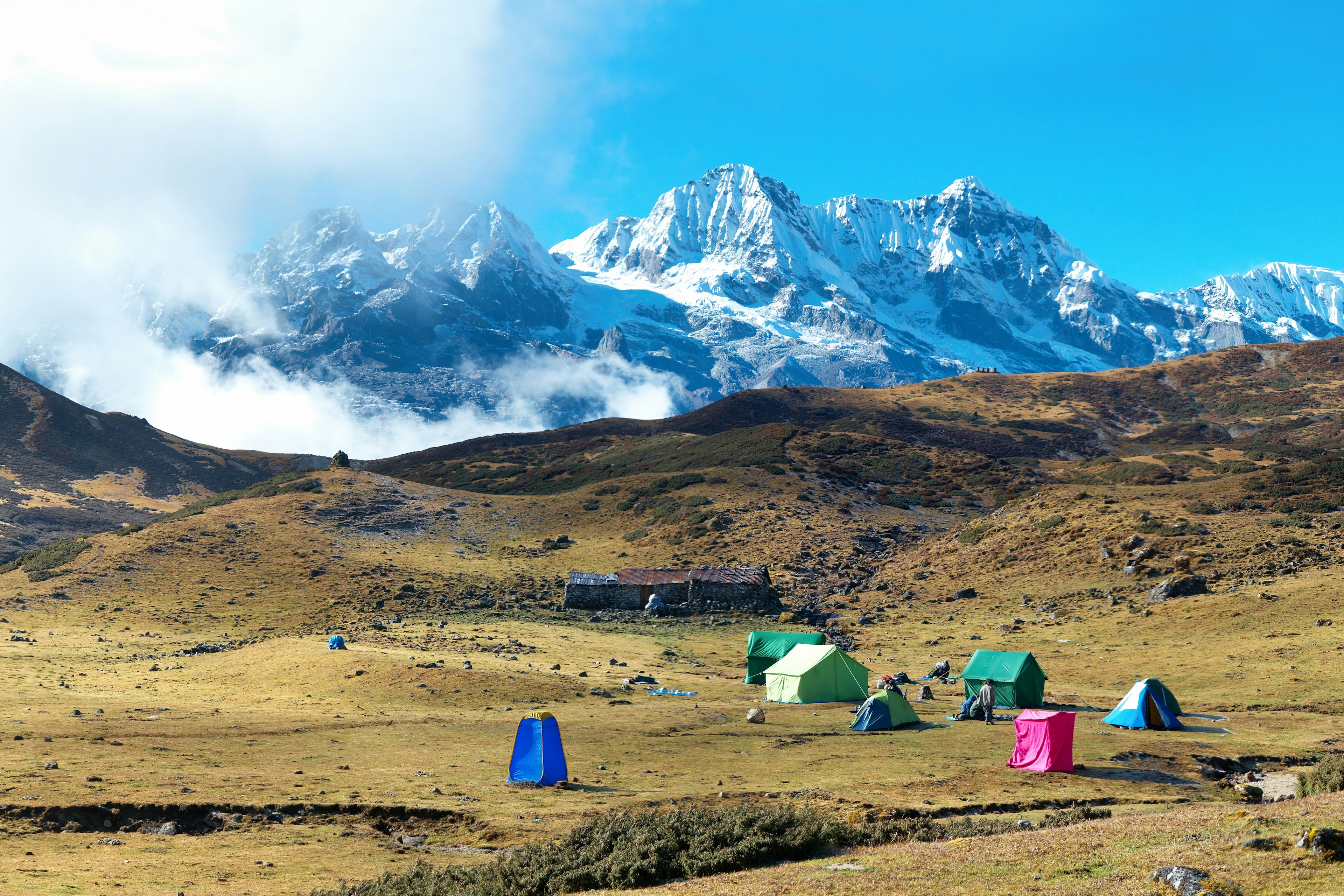
Considering the remarkable diversity of India's Northeast States, it seems almost unfair how frequently they are grouped together. India’s northeast has an offbeat experience for every traveler, from the annual Hornbill Festival in Nagaland, showcasing the ethnic diversity of the state’s 17 main tribes every December, to the unparalleled views of 8586m (28,169ft) Khangchendzonga – the world’s third-highest mountain – from the trekking trails of Sikkim.
We recommend starting your tour of the region in Guwahati in Assam, spotting one-horned rhinos in Kaziranga National Park and then traveling onward to Majuli, the world’s largest river island. In Meghalaya, explore the busy markets of Shillong and loop towards the scenic town of Cherrapunji, surrounded by waterfalls and living root bridges – engineered by intertwining rubber tree roots over time. Further northeast is magnificent Tawang Gompa in Arunachal Pradesh, and the atmospheric Ziro Valley, which offers tribal encounters and beginner-friendly treks through bamboo and pine forests.
Planning tip: The busiest time to visit the northeast from March to June when there’s still a slight coolness in the air. Accommodation during these months is more expensive; if you’re looking for a more affordable trip, the weather during the summer months – except in lowland areas affected by the monsoon – is pleasant too.
Wherever you go in India, from Kashmir in the north to the tip of Kanyakumari in the south, no trip would be complete without a visit to a local market. Take a shikara (wooden boat) to watch the chaos of the early morning floating vegetable market on Dal Lake in Srinagar or go bargaining for jhumkas (earrings) in Chandni Chowk in Delhi and you'll be immersed in colors, noise and bustle.
Markets in India are worth visiting partly because they’re authentically Indian – they’re frequented by local people year-round, regardless of whether tourists visit or not. We recommend starting off with a few of Delhi’s favorite bazaars – browse for clothes and attars (scents) in Chandni Chowk, Tibetan-style jewelry in Majnu-ka-Tila, and spices in Khari Baoli, Asia's largest spice market – your clothes will smell of ground cinnamon and cardamom for days, even after being laundered!
Other rewarding markets include Mysore’s Devaraja Market, Jaipur’s Johri Bazar, and Kolkata’s Mullick Ghat, Asia’s largest flower market. Then there's Shillong's Iewduh Market, where bamboo bows and arrows are traded as essential household commodities.
Planning tip: India's markets are famously busy and the crowds can be overwhelming. New-to-India travelers may want to book a guided tour. Be sure to keep your valuables in a concealed money belt (or similar), as pickpockets are common, and watch out for porters pushing cartloads of goods through the aisles.
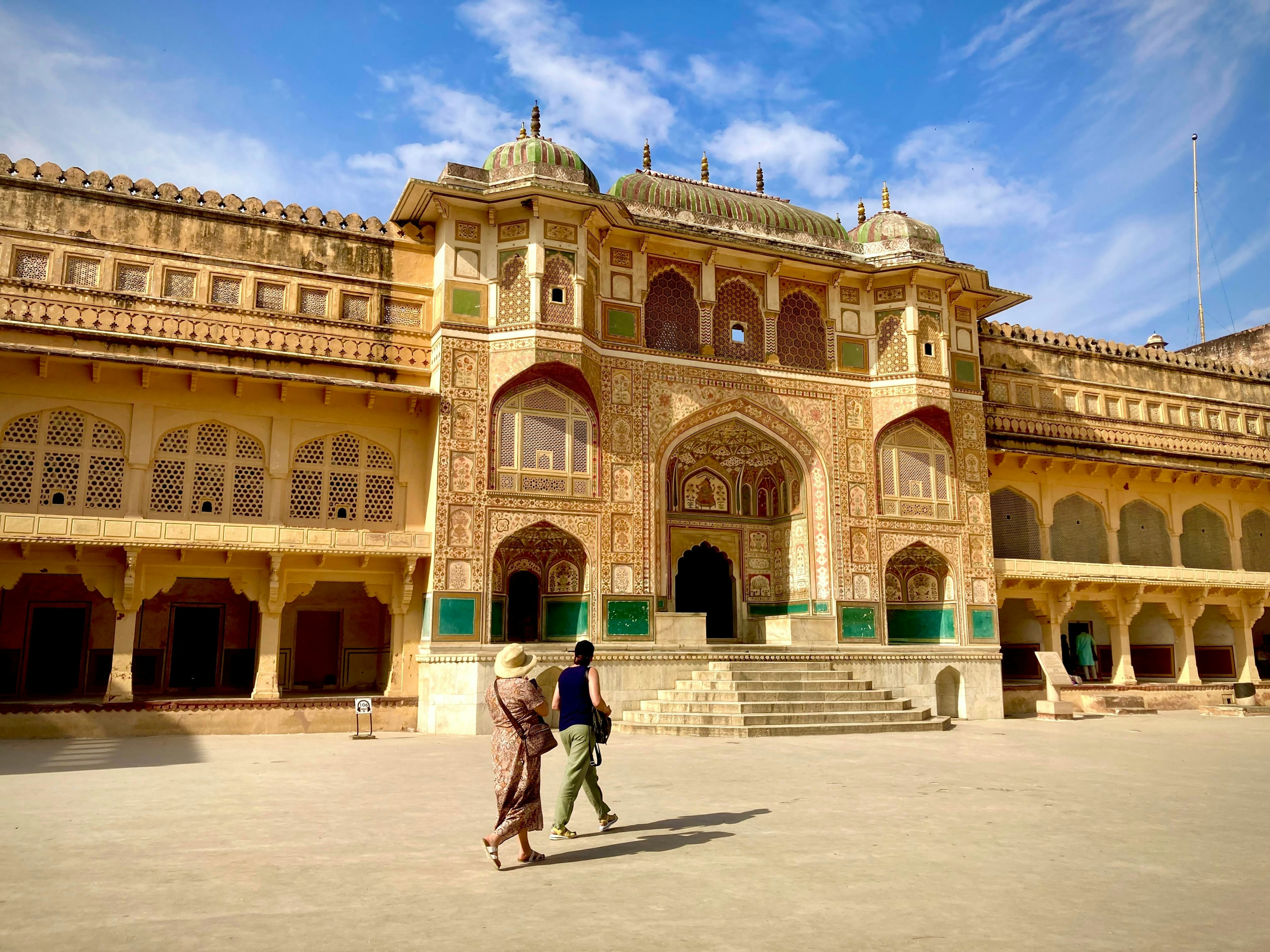
Thanks to a rich history of intertwined kingdoms and feuding dynasties, Rajasthan is home to some of India’s most spectacular forts and palaces. Over the centuries, royal states tried to one-up each other in fabulous architectural displays of power, and fought countless battles amongst themselves and against outsiders. It was only in the mid-1500s that the region – then called “Rajputana” – was brought together under the Mughal emperor Akbar.
Start with Amber Fort on the fringes of Jaipur, with its honeyed pink-and-yellow walls standing stark against cloudless blue skies. Inside, the palace walls are intricately painted, and the Sheesh Mahal (Mirror Palace) brings the sky indoors as reflections twinkle on mirror mosaics. Other forts and palaces to check off your list include Mehrangarh in the blue city of Jodhpur, Ranthambhore Fort inside Ranthambhore National Park, Chittor in Chittorgarh, and Kumbhalgarh in the Aravali Hills.
Planning tip: Be aware that you'll need to pay a fee to use a camera inside most fort complexes, but you can often shoot on your phone for free. Although many forts offer elephant rides for sightseeing, these should be avoided as they are harmful to elephants.
With an almost impossibly diverse population, India has religion at the core of its social fabric, and religious festivals pulse through the country’s calendar. Celebrated enthusiastically by the majority Hindu population, Holi – the festival of colors in the spring – and Diwali – the festival of lights in October or November – are major events across the country. In the east, Durga Puja is a grand celebration of the Hindu goddess Durga that brings Kolkata to a standstill.
Similarly, Ganesh Chaturthi – celebrating the elephant-headed Hindu god Ganesh – is of paramount significance in Mumbai, where crowds accompany giant statues of the deity as they are paraded through the city and submerged in the sea.
The Muslim celebrations for Eid (at the end of the fasting month of Ramadan) are memorable in Delhi, Lucknow, Mumbai, and Hyderabad – people open up intricate late-night markets and street-food stalls showcase Muslim delicacies native to each area, such as Hyderabad's famous haleem – a nourishing stew of meat and wheat or barley.
There are dozens of other festivals so be sure to do your homework on festival dates. The harvest festival of Onam brings bursts of color across the southern state of Kerala in August or September. If you’re headed to Ladakh or other places with large Tibetan Buddhist populations such as Dharamshala or Arunachal Pradesh, the Tibetan New Year festival of Losar in February or March brings three days of festivities, including masked Buddhist dances at monasteries.
Planning tip: Many Indian festivals follow the lunar calendar, so dates change every year. Islamic festivals move forward by 11 days each year, relative to the Gregorian calendar. Always check the dates of festivals locally to avoid missing significant events.


Nov 22, 2024 • 7 min read

